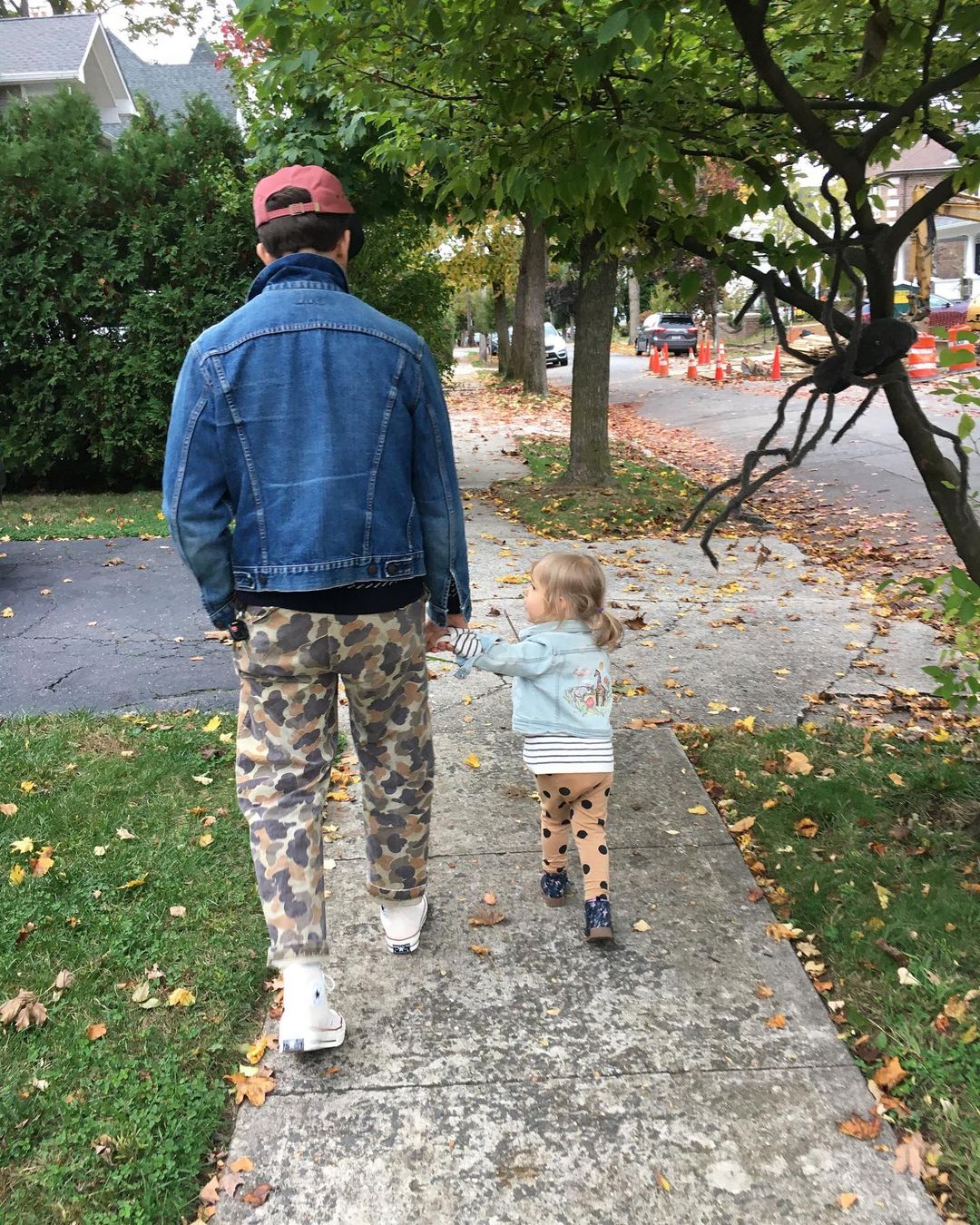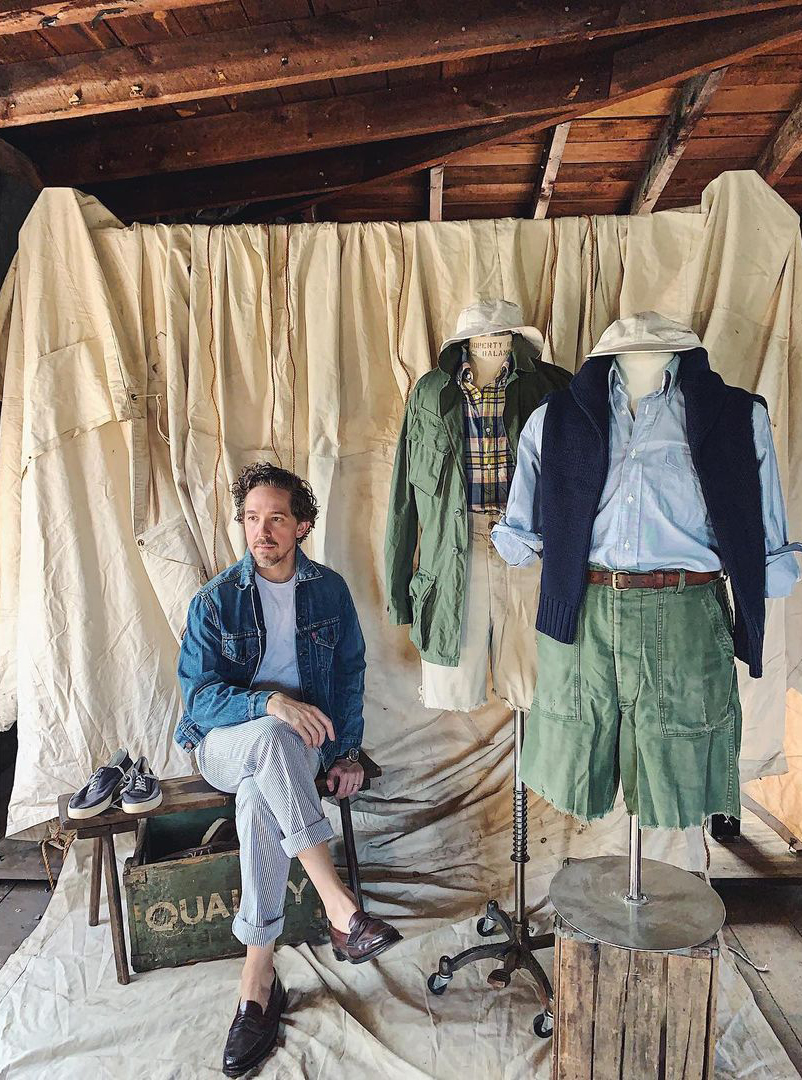
There’s a story about how Miuccia Prada, head designer of Prada and founder of its subsidiary Miu Miu, once found a stunningly beautiful, silk faille Balenciaga coat with a rosebud print inside a Parisian vintage shop. Engrossed by the construction, she turned the seams inside-out and admired the detailing. When her friend suggested she should get it, Prada replied: “Oh, I’m not just going to get it. I’m going to copy it.” This is Miuccia’s genius — to be able to unearth the one thing in a vintage shop and know it will be a commercial success. Then to be able to copy it exactly.
Vintage clothes are often the jumping-off point for many fashion collections. One of Nigel Cabourn’s most recognizable outerwear designs borrows from Sir Edmund Hillary’s mountaineering parka. Maison Margiela literally has a line called Replica, where they reproduce vintage clothes found in thrift shops and flea markets. Japanese lines such as The Real McCoys and Buzz Rickson are based on the same ethos. In an interview with The Fashion Law, Courtney Love said of Slimane’s Saint Laurent’s collections: “It reminds me of Value Village. Real grunge. I love that rich ladies are going to pay a fortune to look like we used to look when we had nothing.”
Thrifting is often recommended as a way to build a quality wardrobe on a budget. But there’s another reason to shop second-hand: the clothes are often cooler. They have interesting details and a patina that’s hard to achieve if you’re a cubicle farmer like me. Many of the most stylish men I know either wear vintage exclusively or mix second-hand clothes into their outfits, such as Alessandro Squarzi, Aaron Levine, Peter Zottolo, Ethan Newton, and of course, our own Jesse Thorn.
That said, I don’t always know what to buy. So I recently reached out to one of my favorite vintage dealers, Brian Davis of Wooden Sleepers, to see what he recommends. “I like things that don’t scream vintage,” he says, “but they have a special detail, fabric, or a feel that makes them unique.” Here are ten things Brian thinks are better bought used.
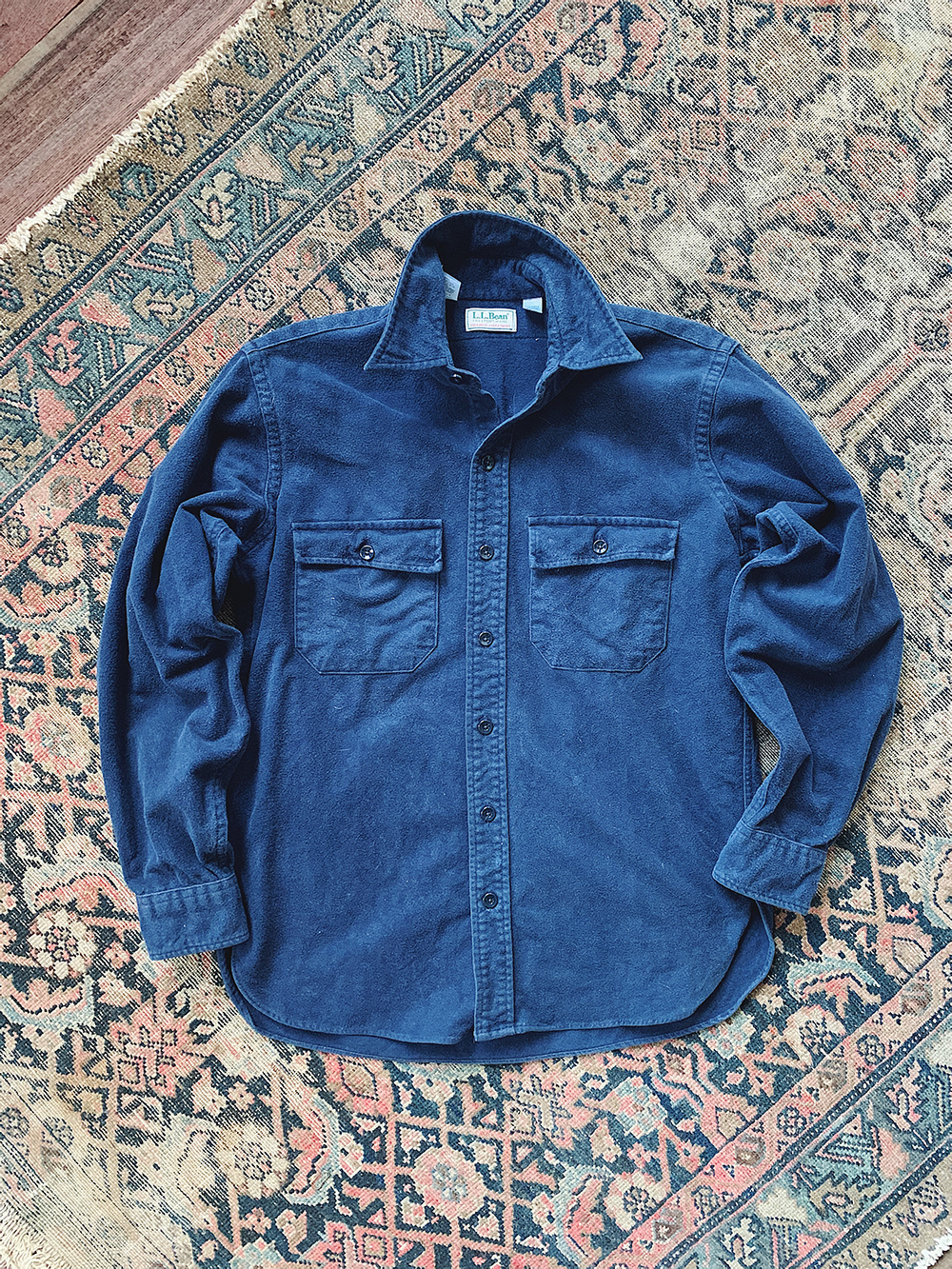
LL Bean’s Chamois Shirts
“Of course, you can buy one of LL Bean’s chamois shirts today new, but the new ones often come in boring colors such as grey or navy. Whereas, in the 1980s, they made them in teal, purple, and yellow. Even in more standard colors such as red or navy, the fabric breaks down and gets really soft when these have been washed a million times. The colors become muted, and they look charming. The cut and details are also different. Vintage chamois shirts have scalloped, workwear styled shirttails that were meant to be tucked. I actually wear them untucked, often over an oxford shirt like a shirt jacket. I live in an old house that’s drafty, so it’s always cold. LL Bean’s chamois shirts can be a nice layering piece in this way.”
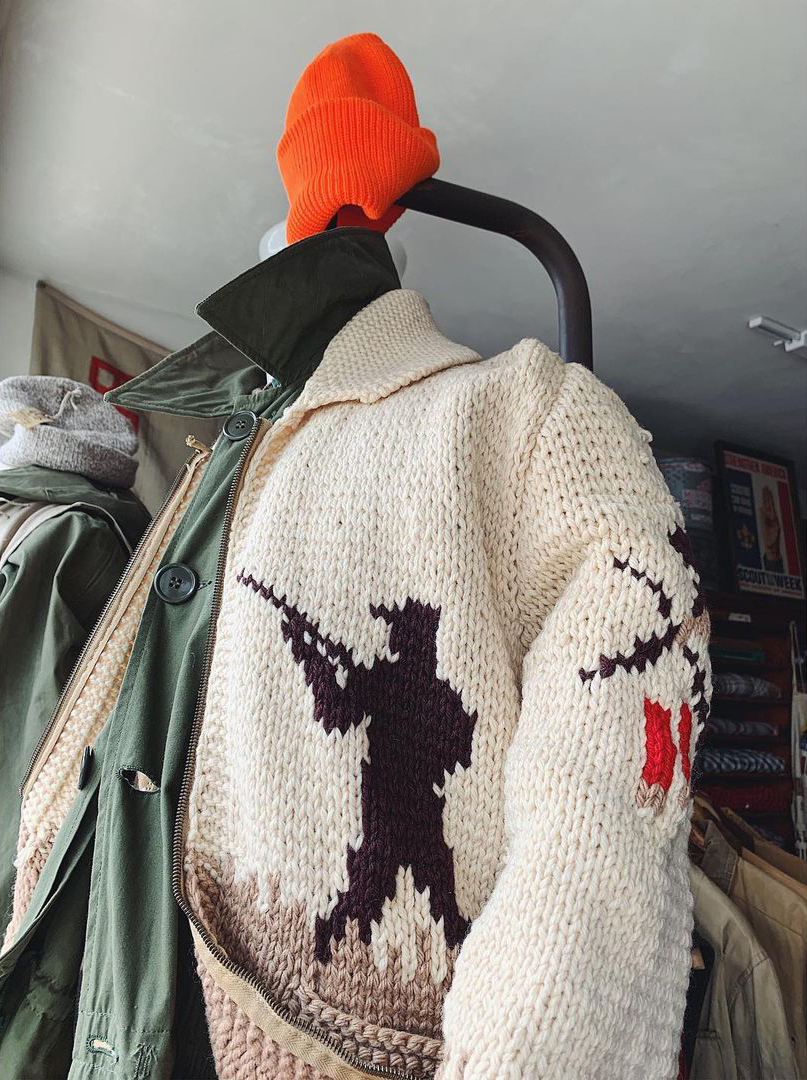
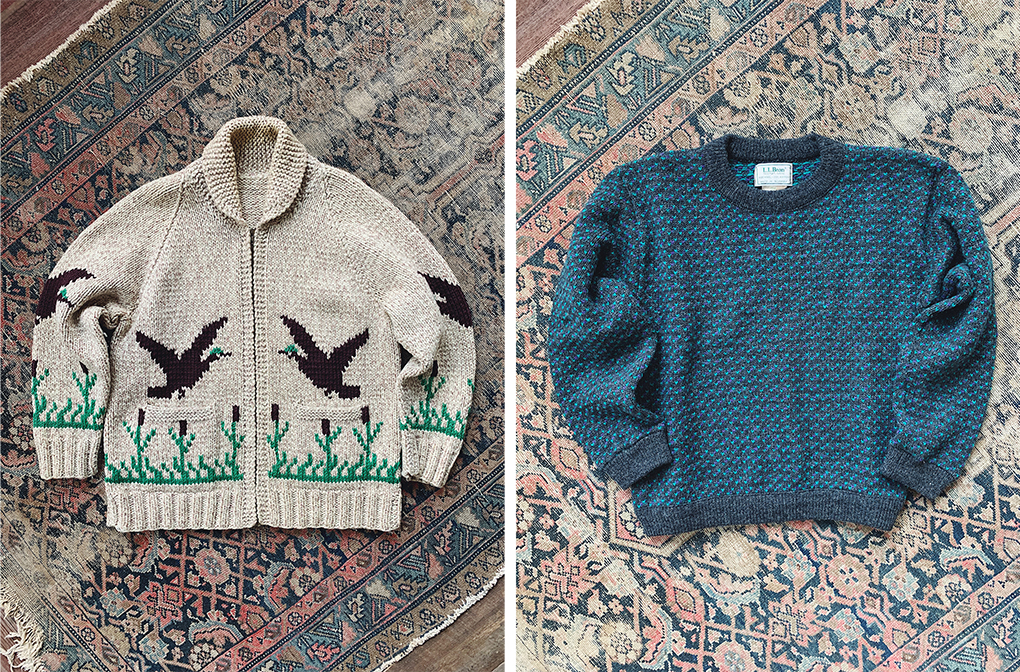
Heritage Sweaters
“I like sweaters that were made in the regions in which they were born. If I’m looking for a vintage Shetland sweater, I want one that was made in Scotland. If it’s an Irish Aran, I want one from Ireland. Sometimes, when shopping in this way, it means you’ll come across brands that you’ve never heard of, but that just makes the sweater more interesting to me.”
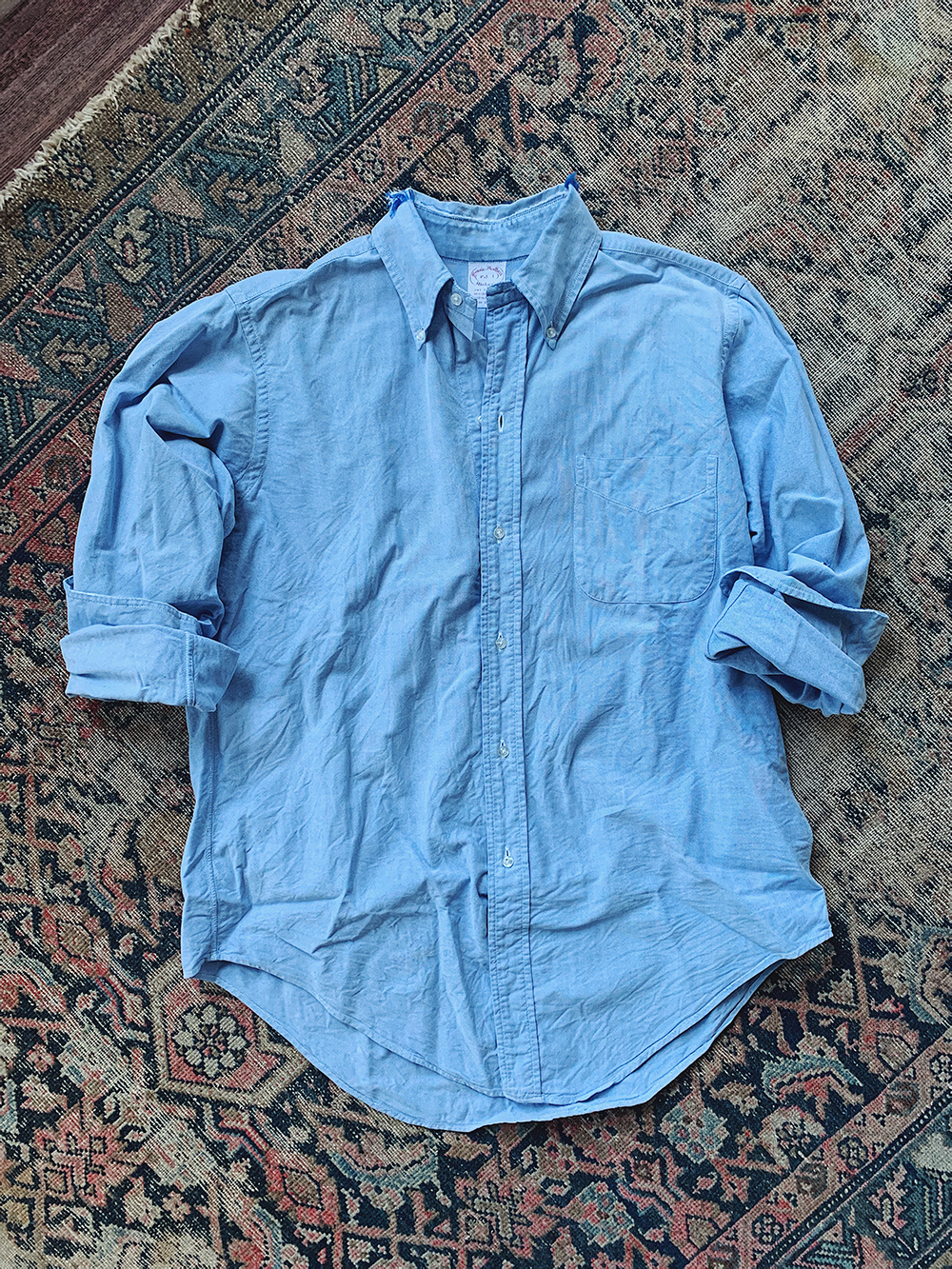
Brooks Brothers’ Oxford Cloth Button-Downs
“In recent years, Brooks Brothers has tried to be everything to everybody. Their shirts today come in Milano and Madison fits, non-iron and must-iron fabrics, etc. But I think they were at their best when they were just distinctively Brooks Brothers. They were an icon for a reason. For their oxford cloth button-downs, I prefer the ones that have an unlined collar and were made in the USA. People often complain of the fit, as these tend to fit big and roomy. In the old days, a 15.5 neck shirt came with something like a 24″ chest, whereas nowadays they’re closer to maybe a 22″ chest. But when you put them together with the right things, everything comes together. You need to wear them with a higher rise pant. Then it’s like, “Oh, that’s the look. That’s the look of Paul Newman, Miles Davis, and ‘insert Tumblr menswear image here.'”
Derek: What do you say to people who are afraid of looking out-of-touch in these baggy shirts and high rise pants?
“I say mix it up. Some guys go full trad, and that can be great if it’s your style. But I like wearing mine with vintage military khakis or OG 107s. Instead of a navy blazer, I’ll pair mine with a military jacket or trucker jacket. Mix it up with less predictable outerwear options.”

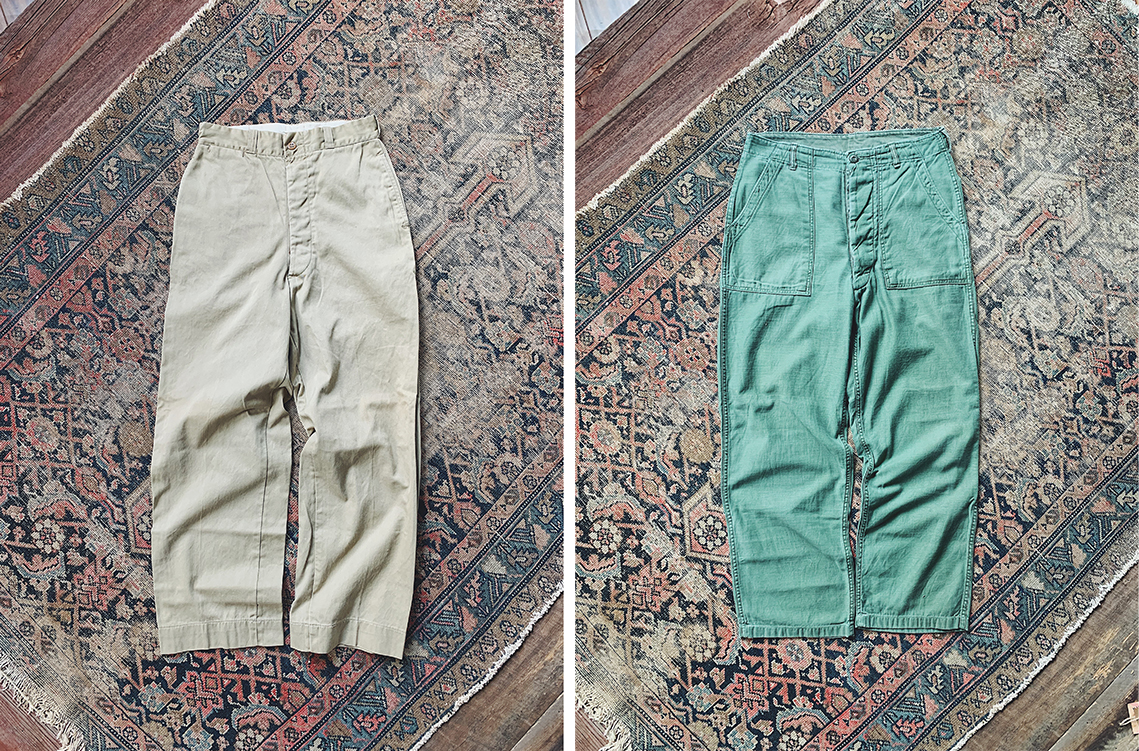
Olive Fatigues and Military Khakis
“These are the pants I reach for the most. For as many detail-obsessed reproduction brands out there, I’ve never been able to find one that gets the right shade of tan or the feel of this vintage fabric. Like, how many brands out there have tried doing a WW2 chino? They may be good on their own terms, but they’re never exactly the same as the real thing. I don’t know if it’s because the looms they used aren’t around anymore or if it’s because these vintage pants have been washed a million times. It’s easier to find modern takes on the OG 107 fatigue, rather than the military khaki, but there’s still always something special about the originals.”
“I like how these have a higher rise and fuller fit. They’re not so great in the dead of winter because the lightweight fabric and fuller cut can let a lot of cold air inside. But I like wearing them in the spring through fall. I’ll pair them with a vintage Brooks Brothers oxford shirt, some Sperry CVO canvas sneakers, and white socks in the spring. Or even a tucked-in t-shirt. When the weather gets cooler, I like them with an untucked chambray shirt, a chore coat, and some heavy boots.”
Derek: What details do you look for when shopping? Were these made with a different cut over the years?
“From the 1950s through the ’60s, almost any pair of military khakis or fatigues will have been made the same way. It wasn’t until about the ’80s when they started using a poly blend. When they were made with a poly blend, the fabric didn’t fade, and fading is the best part. They also changed the fit, so the new ones looked more like a Dickies work pant. Some people may find that slightly tapered look more flattering, but I like the big 9″ opening. I recommend trying to get the all-cotton ones made before the 1980s. All the manufacturing info will also be stamped on the inside pocket, so you can see where and when they were made. If you’re into this stuff, those details can be fun.”
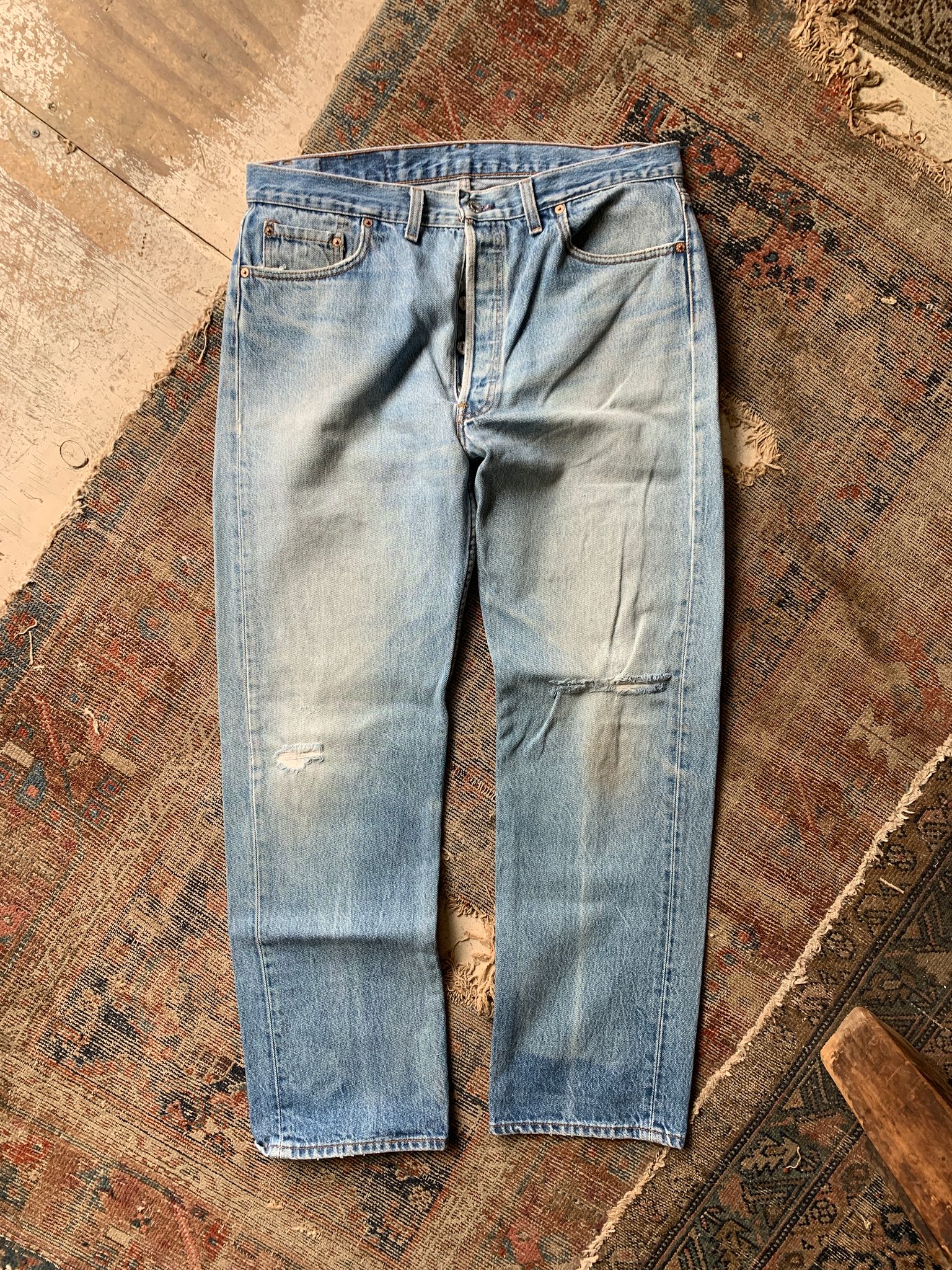
Levi’s Made-in-USA 501s
“Levi’s is such an old company, and there’s so much to know, sometimes hunting for a pair of vintage Levi’s can feel intimidating. But when I was coming of age in the early ’90s, I admired guys like Kurt Cobain, who wore 501s. He probably didn’t spend $800 on a pair of rare Levi’s. He probably just wore whatever was around at the time. I think if you hunt for a pair like that, it can look great. The 1980s and ’90s 501s were the last era of made-in-USA Levi’s jeans. They weren’t even selvedge; they were just the regular 501s that anyone could buy. There’s something very approachable and unpretentious about that.”
“Of course, if these didn’t look good, then none of this would matter, but I think they have a cut that looks very contemporary. It’s what a lot of guys are looking for now: a slightly higher rise, a little more room through the seat and thigh, and a very gentle taper. These look good with camp mocs, canvas sneakers, and boots. Plus, when you have a pair of jeans that have been authentically faded, they’re always going to look better than those that are new and chemically processed. I like the ones that were made in the 1980s or early ’90s. I wear them from about spring through fall, but once it gets really cold, I switch to a heavier pair of Levi’s Vintage Clothing 1955 501s in raw denim. It has a bit more room through the leg, which is how I like my pants nowadays.”
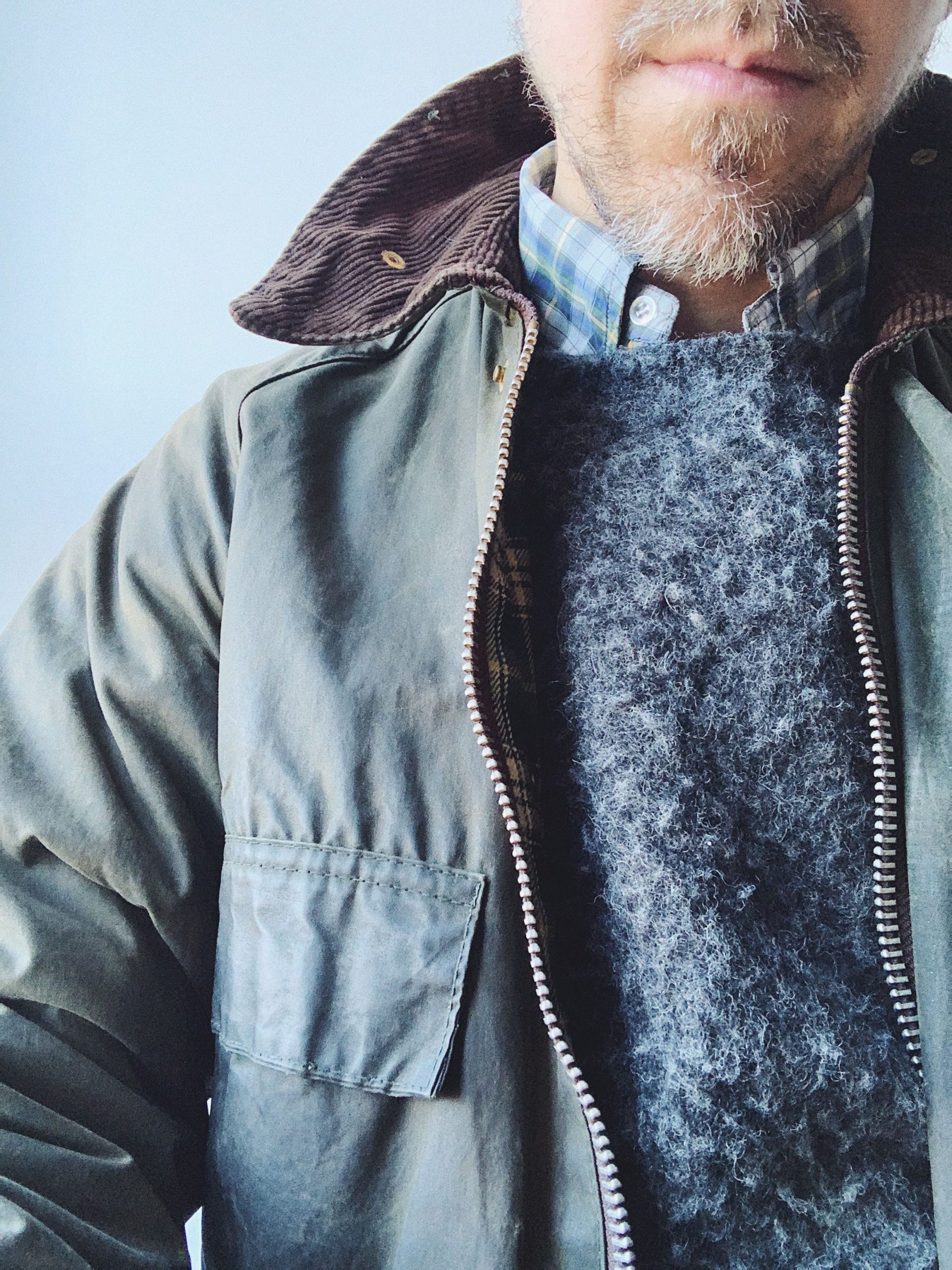
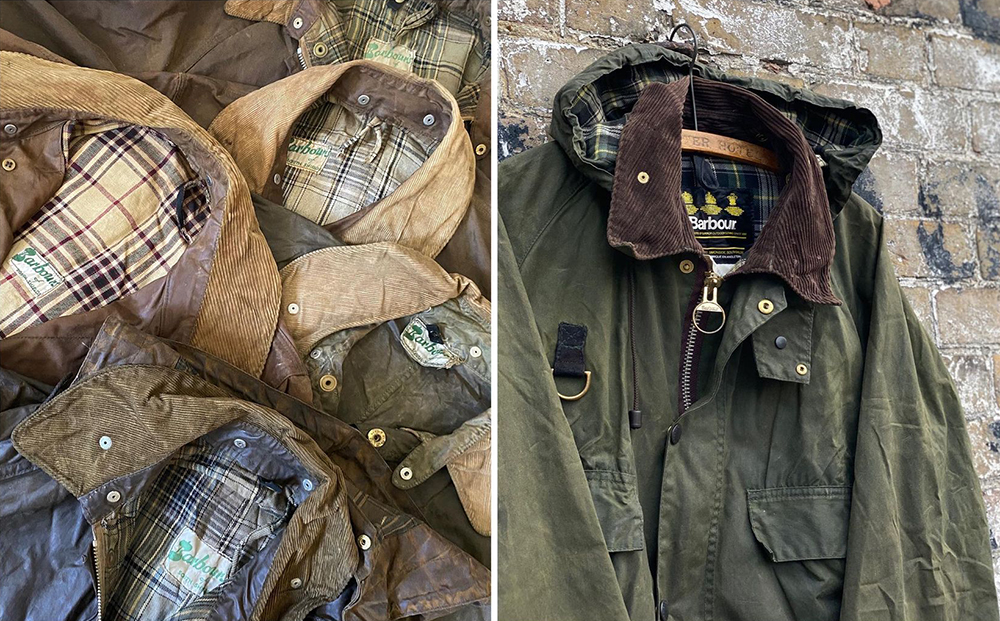
Barbour’s Waxed Cotton Jackets
“Rogan at A British Jacket is an obsessive collector. If you’re looking for a vintage Barbour, even if it’s super obscure, there’s a good chance he has one for sale. I bought one from him, and it fits like a glove. Mine is a vintage Bedale with straight chest pockets, whereas the new Bedale model has slanted hand warmers. It’s just one of those details where, if you’re into this kind of stuff, you know it’s an older model when you see it. Also, the more these things get worn, patched up, darned, and broken in, the better they look. To be sure, there’s a fine line between a beautiful, vintage Barbour and one that stinks to hell. If you get one that smells, just send it to New England Reproofers for a professional cleaning.”
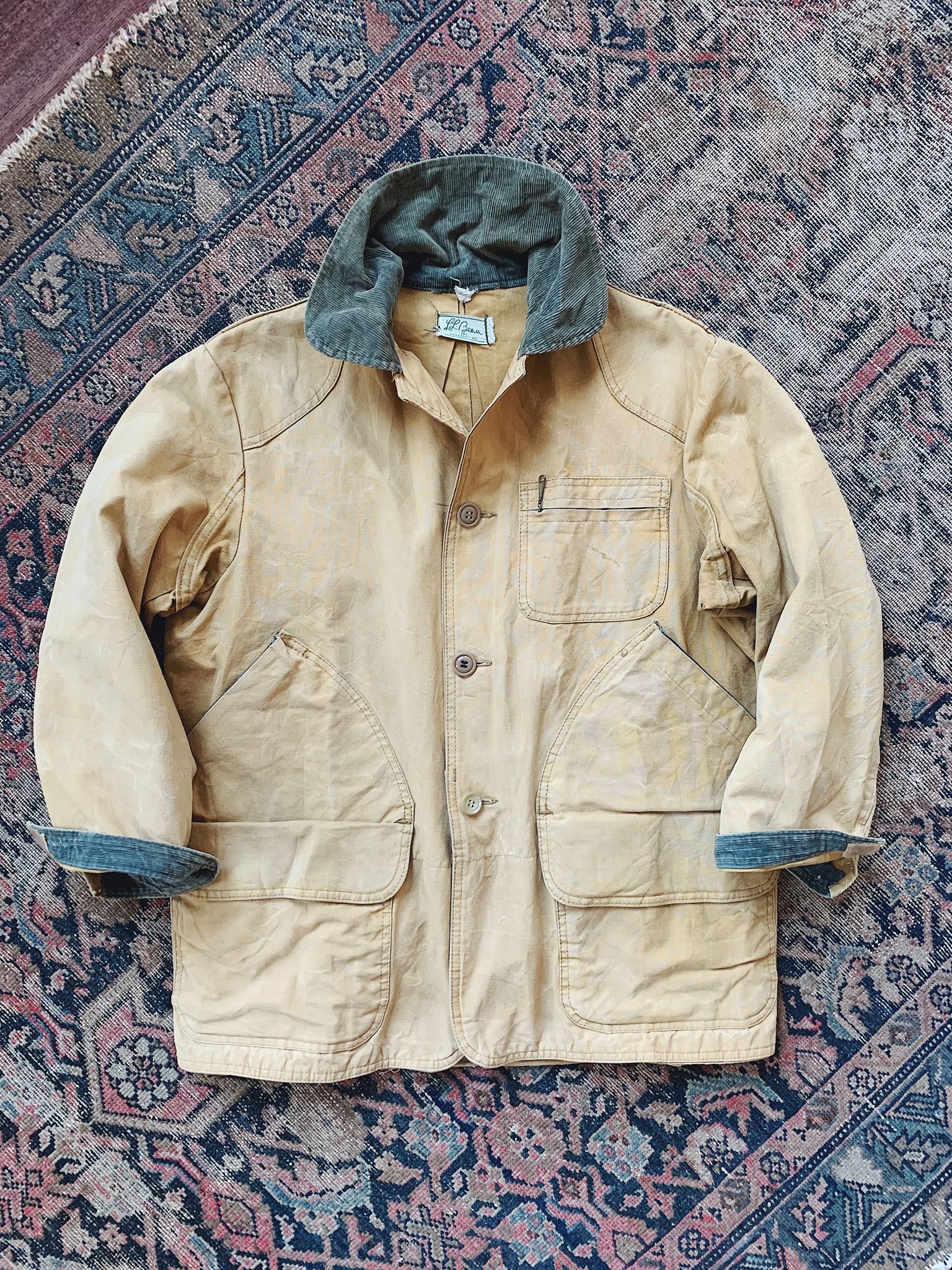
LL Bean’s Field Coat
“When Todd Snyder collaborated with LL Bean, they brought me in for a side project. We wanted to tell the history of LL Bean through some of the company’s more iconic pieces. Of course, we had to include their field coat. I recently learned that LL Bean never called it a barn coat, which is the term most people use today. That was the name J. Crew gave the style. But LL Bean called it their Maine Duck Hunting Coat or field coat, which makes more sense since they designed it for hunters. I’ve always loved this photo of Andy Warhol wearing his. So for a long time, I’ve been looking for one made in the 1980s, when that photo was taken. I was so happy to find one finally. The canvas is so thick and rough. I love the coat because it feels like the quintessential version of this style.”
“If your wardrobe leans trad, then you can wear one with a Shetland sweater, an oxford cloth button-down, some chinos, and a pair of loafers. But if you favor a more rugged style, you can wear one with raw denim jeans, a chambray shirt, and maybe something like a Browns Beach vest underneath. That’s how I tend to wear mine.”
Derek: How do you know when a jacket was made?
“You can date LL Bean’s items by their label. Anything made before the 1980s will have a script label. If you see an item with a multi-colored label and a mountain range, that item will have been made sometime in the 1980s or ’90s.”

A2 Deck Jacket
“Everyone who’s into vintage wants an N1 deck jacket, which is the US naval jacket produced in the 1940s. It’s made from a hard-wearing jungle cloth and lined in alpaca. If you can find one in your size and it’s not completely destroyed, it will be costly. The A2 is a descendent of that jacket. It’s made for a similar function, but the US government made a lot more of them, so they’re easier to come by and thus more affordable. Last winter, it was my go-to jacket. The cut is trim and flattering. Since winters here aren’t as cold as they used to be, I don’t find myself reaching for my heavy-duty outerwear as much. This has a wool lining, so it’s warm, but not overly so. It’s a lighter-weight winter jacket that you can wear with chambray shirts, a rolled-up watch cap, some jeans, and a pair of boots. At the same time, if you favor a more trad style, you can also wear it with chinos and an Irish Aran.”
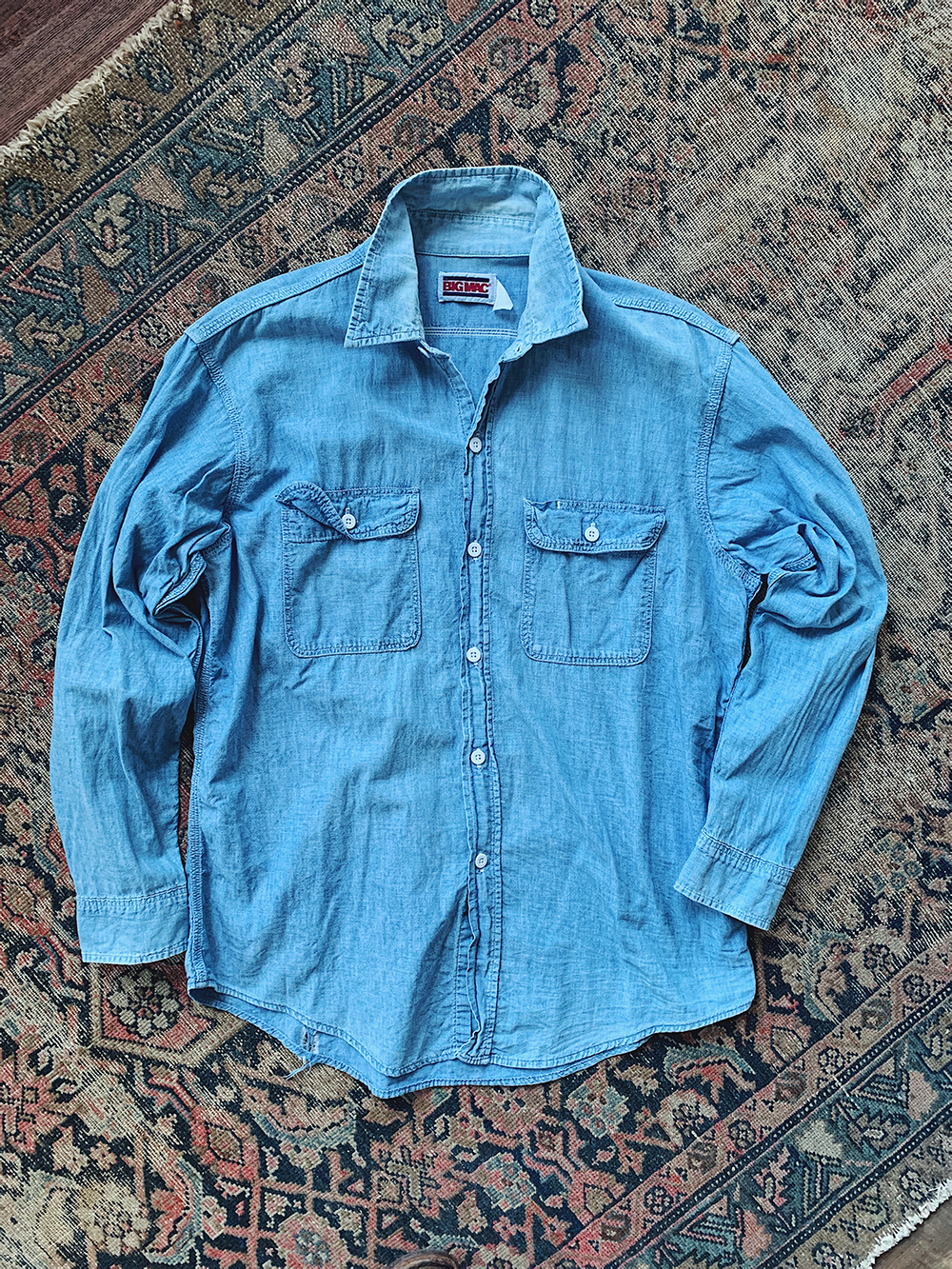
Big Mac’s Chambray Shirts
“The best part about these is that they’re readily available, but you have to look closely at the labels. Sometime in the 1970s or ’80s, the company switched to a poly-cotton material. I think the all-cotton ones are best. When you find them, they’re usually affordable. Over the years, I’ve owned chambray shirts from all the usual suspects, such as Engineered Garments. But I grab my Big Mac shirts most, partly because the fabric is so broken-in and soft. These vintage work shirts tend to be big, roomy, and slightly boxy because they were designed to be utilitarian. Manufacturers were focused on mobility.”
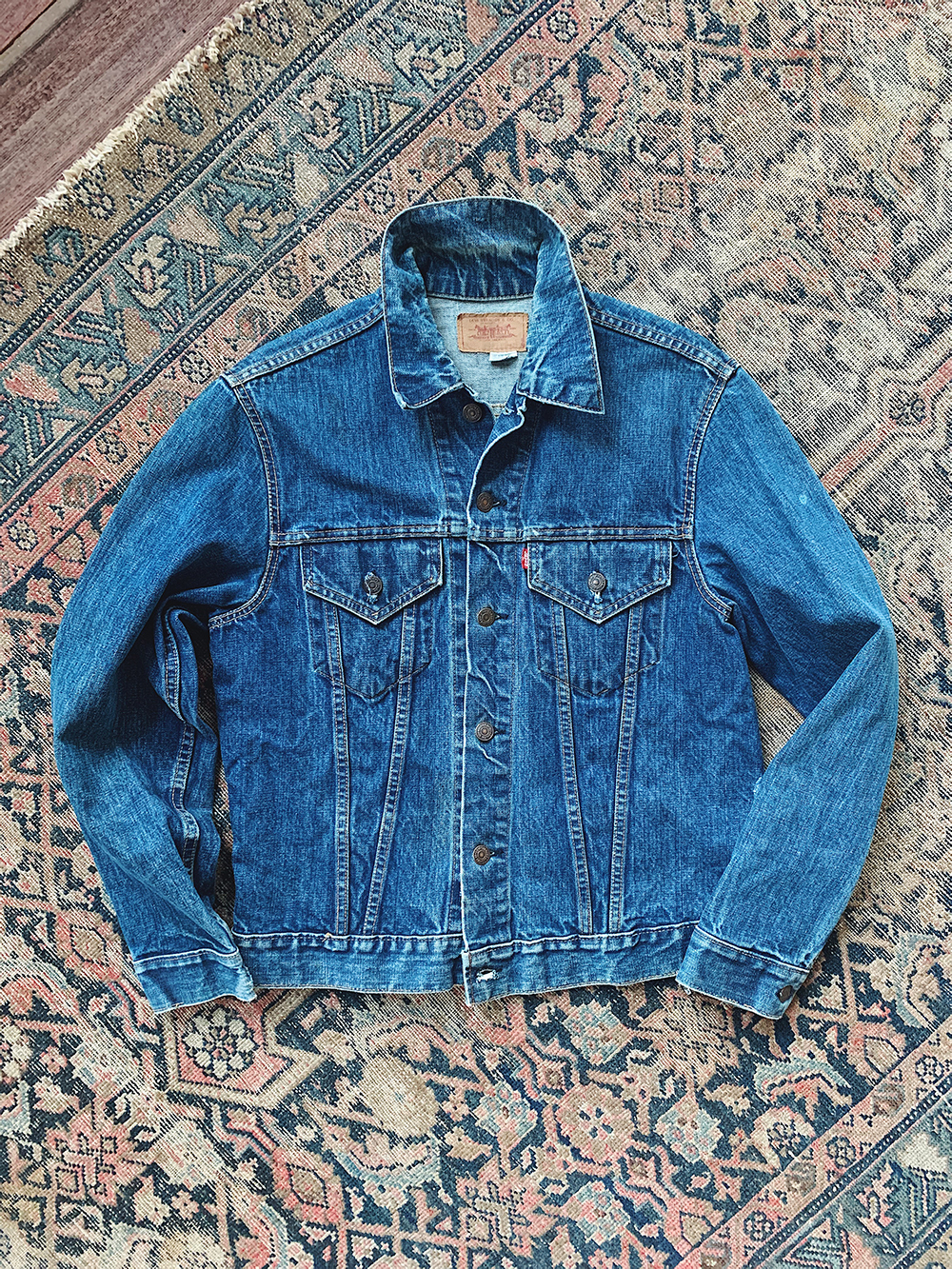
Levi’s Type III Trucker Jacket
“This is like Vintage 101. If you’re a guy who has never bought vintage clothing before, I recommend starting with this. Levi’s Type III trucker jackets look good on most people. Of course, you can buy a new one nowadays at any Levi’s store, but the vintage ones have an authentically broken-in look that you can’t find new. I think the best ones were made in the 1960s. The fabric feels different; the cut is flattering. They have higher armholes, slimmer arms, and a slimmer torso. They fall at the right places. As you get into the 1980s, the armholes are lower, the sleeves baggier, and the body bigger. To find one from the ’60s, look for the ‘big E’ on the red tab. That’s the telltale sign. I pair them with basically anything except blue jeans — olive fatigues, tan chinos, black jeans, or even seersucker pants.”
Derek: Thanks for your time, Brian! Readers interested in shopping for these vintage pieces can browse eBay or Etsy. Alternatively, Brian at Wooden Sleepers will also have many of these items at his store. Not everything in his inventory is on his webshop, so if you’re interested in buying something, send him a message on Instagram. I find that Brian is especially good at finding the best version of any specific thing. So even if the item isn’t particularly rare, he’ll often have a version of it that has interesting details. Last year, I purchased a vintage Lee trucker jacket from him. It’s beautifully broken-in with all sorts of cool repair details. Brian’s prices are a little higher than what you can expect to pay on eBay, but for me, worth it to not have to hunt around. Plus, he can advise on sizing.
